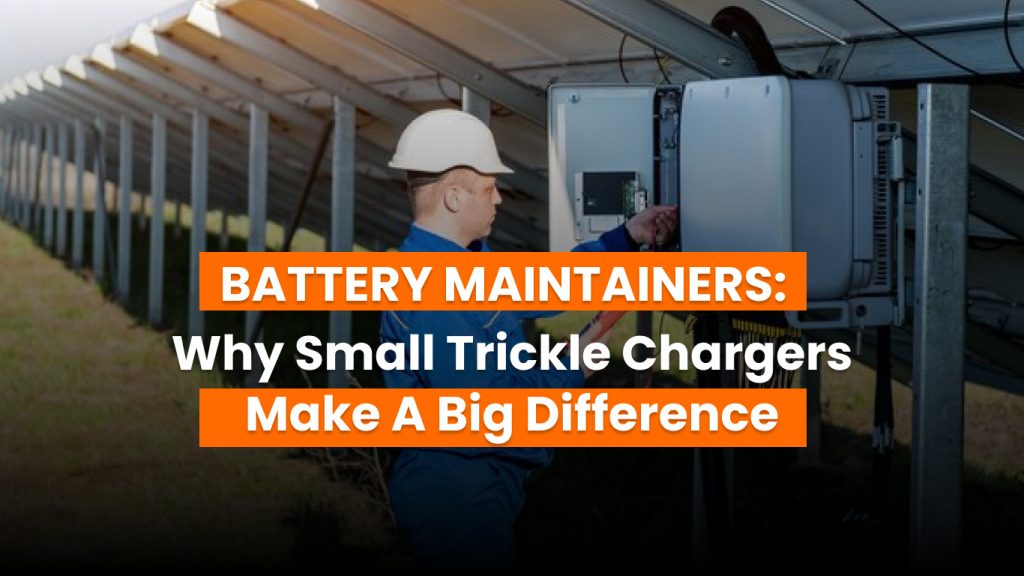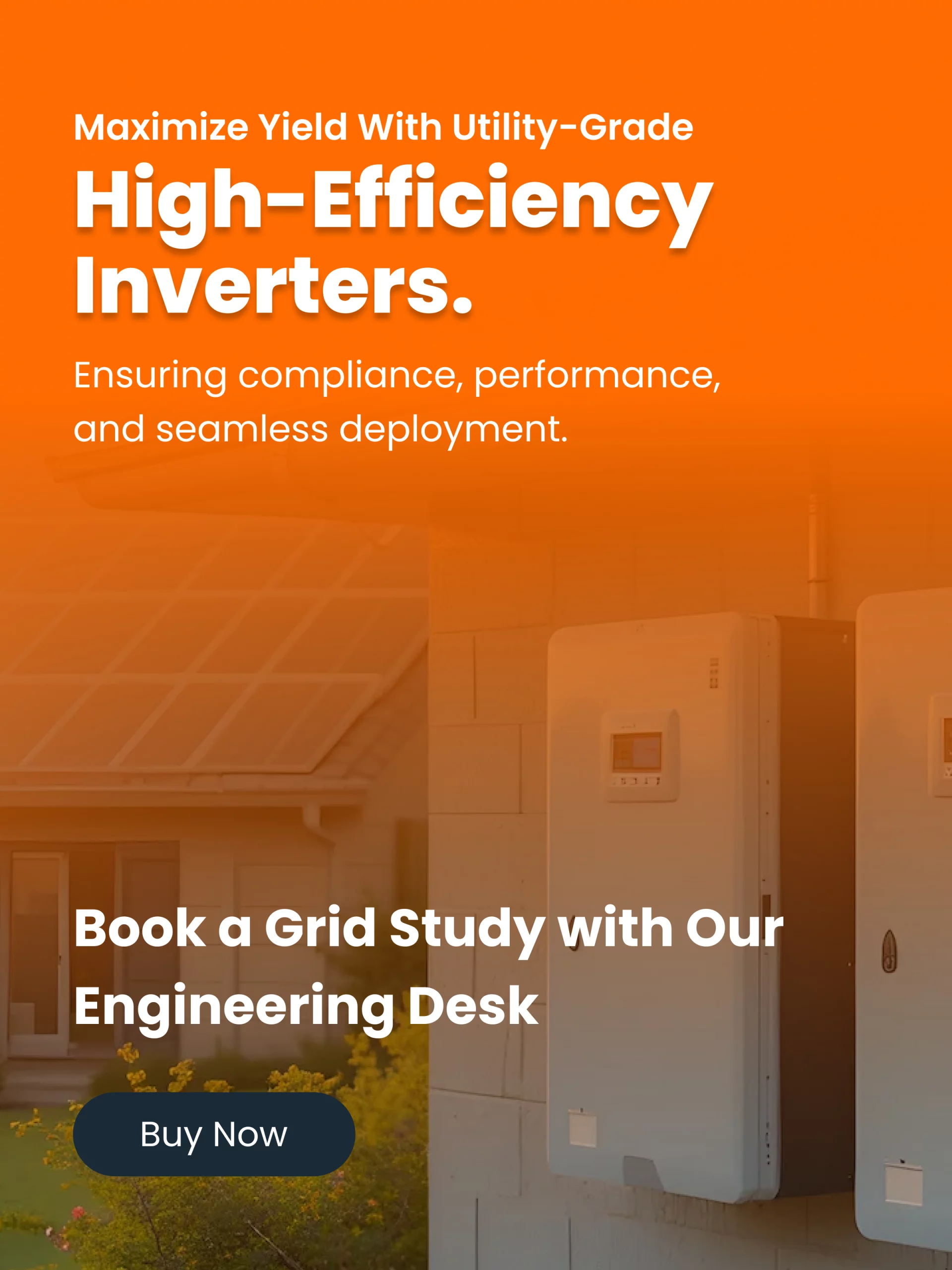Parking an RV for the winter, dry-docking a boat, or garaging a classic car all have one thing in common — long months when the battery sits unused. Left alone, even the best battery slowly self-discharges until it is too weak to crank an engine or run lights. A battery maintainer solves that problem by delivering a low, steady charge that offsets self-discharge without overcharging. Below is a practical guide to what maintainers do, how they differ from full-size chargers, and how to pick the right model for your gear.
What exactly is a battery maintainer?
A battery maintainer is a compact, low-amp device — usually one or two amps — that stays connected to a stored battery and feeds it just enough current to keep it at full charge. Because the amperage is so low, it is sometimes called a trickle charger, but the best units go beyond a simple trickle. Modern maintainers use microprocessors to measure battery voltage and temperature, turning on when the voltage drops below a preset threshold and turning off when the battery is topped up. That automatic cycling prevents two big killers of battery life: chronic under-charging and chronic over-charging.
How does a battery maintainer work?
Inside every maintainer is a small switching circuit that converts household alternating current (or solar panel output, in the case of a solar maintainer) into the direct current your battery needs. The processor then runs a multi-stage algorithm:
- Bulk stage – sends the highest safe current until voltage climbs close to full.
- Absorption (or boost) stage – holds the voltage steady while current tapers off, allowing the plates to fully saturate.
- Float stage – drops to a maintenance voltage, usually around 13.2 V for a 12-volt lead-acid battery, just high enough to balance self-discharge.
Because the unit constantly monitors voltage, it only returns to bulk charging if the battery slips below the set point. The result is a healthy battery that is ready to go the moment the key turns.
Different flavors of maintainers
While all maintainers share the same goal, they fall into several categories:
| maintainer type | key feature | best use case |
| Smart maintainer | Onboard microprocessor adjusts current and voltage automatically | Everyday storage, most modern vehicles |
| Solar maintainer | Uses a small photovoltaic panel instead of grid power | Boats at mooring, remote sheds, off-grid equipment |
| Desulfator | Sends high-frequency pulses to break down lead-sulfate crystals | Reviving older lead-acid batteries |
| Multi-bank charger | Multiple outputs isolated from one another | Boats or RVs with two or more battery banks |
| Basic trickle charger | Constant low current with no processor | Older vehicles, occasional top-offs (requires monitoring) |
Maintainer versus charger: what’s the real difference?
| Feature | Battery charger | Battery maintainer |
| Primary job | Raise a depleted battery back to full | Keep a healthy battery from losing charge |
| Output current | 5–25 A (sometimes more) | 0.5–2 A |
| Monitoring | May include automatic shut-off, but many basic models are manual | Always automated; cycles on and off |
| Risk of over-charge | Higher if the user forgets to disconnect | Very low—maintainer regulates itself |
| Use on dead battery | Yes, ideal for recovery | No, current is too low for a deeply discharged pack |
Think of a charger as a fire hose that quickly refills an empty tank, while a maintainer is a tiny drip that keeps a full tank from leaking.
When should you hook up a maintainer?
- Seasonal storage longer than 30 days – RVs, motorcycles, lawn tractors, snowmobiles.
- Emergency generators – ensure starting battery cranks every time.
- Marine house banks – prevent sulfation between voyages.
- Backup power systems – alarm panels, sump pumps, gate openers.
If the equipment sits unused but must start on demand, a maintainer is cheap insurance.
Can you leave it connected all the time?
Yes—assuming the maintainer is matched to your battery chemistry and voltage. High-quality units are designed for continuous operation and include protections against short circuits, reversed polarity, and overheating. Even so, a quick monthly glance at the indicator lights is smart practice. Unplug and inspect the leads if you spot swelling, corrosion, or abnormally high temperatures.
Choosing the right maintainer
- Match the voltage – A 12-volt battery needs a 12-volt maintainer; a 24-volt bank needs 24 V support.
- Check amperage – One to two amps is plenty for storage. More amps do not equal better maintenance.
- Confirm chemistry compatibility – Lead-acid units may not suit lithium-ion unless the maintainer has a dedicated lithium mode.
- Look for temperature compensation – Adjusts voltage automatically in very hot or cold conditions, protecting the battery year-round.
- Decide on connection style – Alligator clips for occasional use, ring terminals or SAE pigtails for permanent setups.
- Assess extra features – Desulfation mode, solar input, or multiple banks can justify a small price bump if you need them.
Quick setup guide
- Turn off the vehicle or device and locate the battery.
- Identify the terminals: positive (+) is usually red, negative (–) is black.
- Attach the red lead to the positive post, the black lead to the negative post or chassis ground.
- Plug the maintainer into the wall outlet—or position the solar panel in direct sun.
- Verify that the status LED shows charging or maintenance mode.
- Walk away. The unit will handle the rest until you disconnect it.
When it’s time to hit the road, unplug the maintainer first, then remove the black lead, followed by the red. This order avoids accidental short circuits.
Cost versus payoff
A mid-grade maintainer costs about thirty to fifty dollars—roughly the same as replacing one mid-size lead-acid battery. If the maintainer extends battery life by even a single season it has paid for itself. Stretch the battery’s service life from three years to five, and the savings multiply—not to mention the convenience of an engine that starts on the first crank after months of hibernation.
Final thoughts
Battery maintainers are small tools with outsized benefits. By feeding a controlled, low-level charge, they stop self-discharge, prevent damaging sulfation, and keep stored vehicles or equipment ready for action. The technology is simple, the cost is low, and the payoff is a longer-lasting battery and fewer surprise failures. Choose a maintainer that matches your battery voltage and chemistry, connect it before your next long lay-up, and enjoy one less thing to worry about when it’s time to roll out again.




